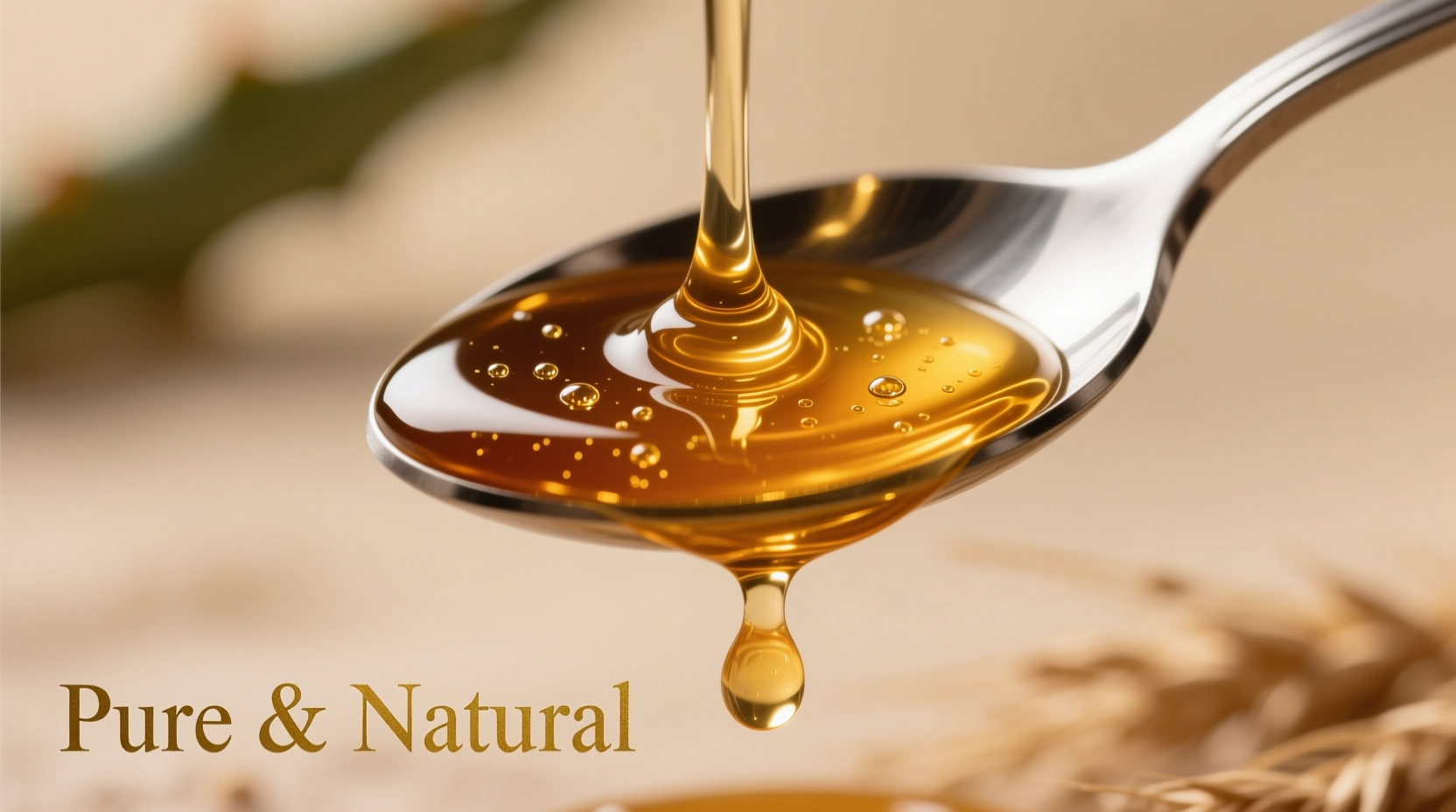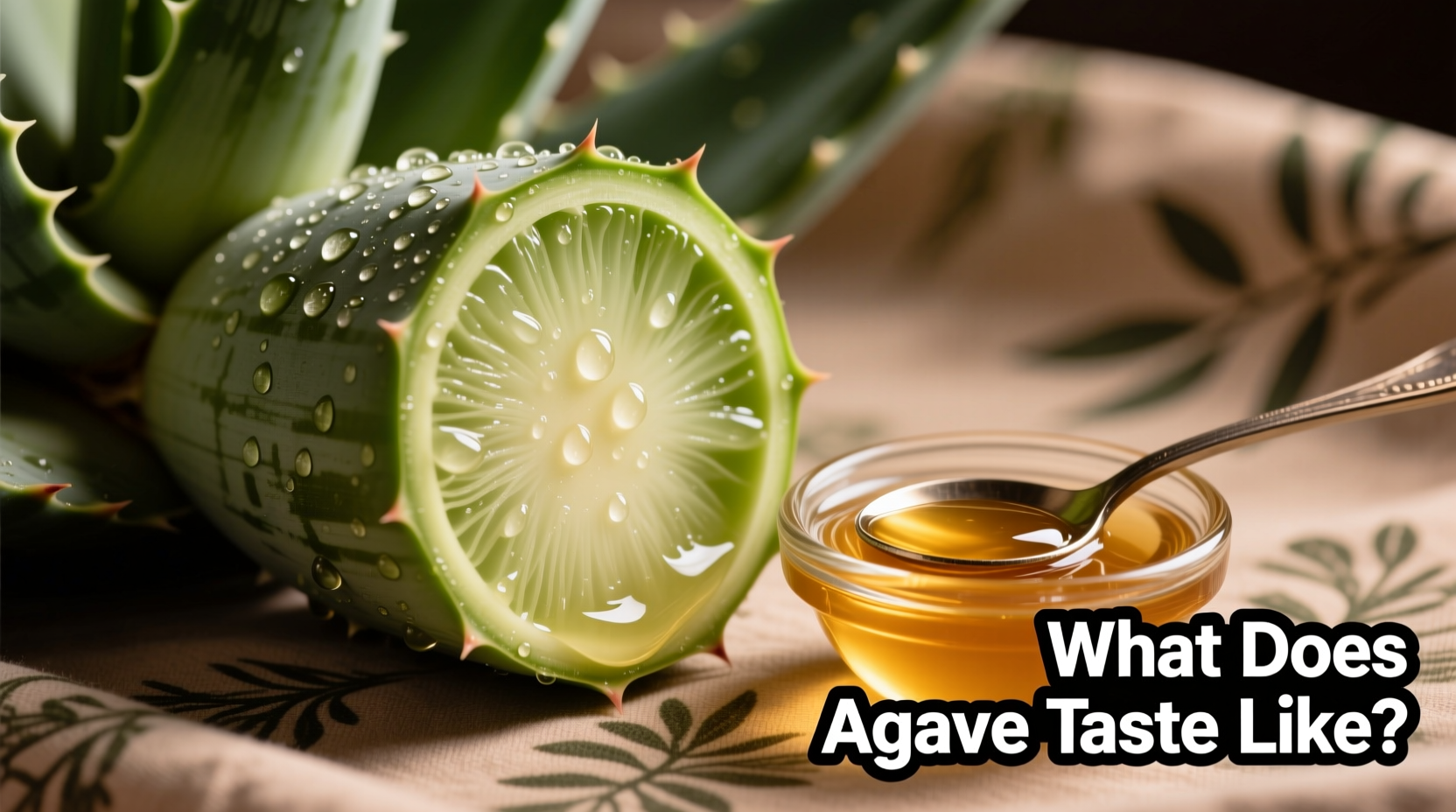When you drizzle pure agave nectar onto your tongue, you'll first notice its smooth, almost viscous texture that coats the palate gently. Unlike honey's pronounced floral or woody notes, agave delivers a remarkably clean sweetness that lets other ingredients shine through. This characteristic makes it particularly valuable for mixologists and pastry chefs who need sweetness without flavor interference.
Understanding Agave's Flavor Profile
Agave nectar's taste varies slightly depending on processing methods and the specific agave variety used. The blue agave plant (Agave tequilana), most famous for tequila production, yields nectar with the most neutral flavor profile. According to research published in the Journal of Agricultural and Food Chemistry, the primary sugars in agave nectar are fructose (70-90%) and glucose (10-30%), which explains its intense sweetness with minimal aftertaste compared to sucrose-based sweeteners.

How Processing Affects Agave's Taste
The transformation from agave plant to bottle involves several critical steps that directly impact flavor:
- Harvesting (Piña extraction) - Mature agave plants (8-14 years old) yield piñas with varying sugar concentrations based on growing conditions
- Heating/hydrolysis - Traditional methods use steam extraction (lower temperatures) while modern processes may use enzymes, affecting flavor complexity
- Filtration level - Determines color and subtle flavor variations
- Concentration - Final boiling reduces water content to 25-30%, intensifying sweetness
As detailed by the USDA Food and Nutrition Information Center, minimally processed "raw" agave typically retains more of the plant's natural vegetal notes, while heavily processed versions achieve near-neutral sweetness ideal for delicate applications.
Agave Compared to Other Sweeteners
| Sweetener | Relative Sweetness | Flavor Profile | Best Culinary Uses |
|---|---|---|---|
| Light Agave | 1.4-1.5x sugar | Neutral, subtle floral notes | Cold beverages, delicate desserts, salad dressings |
| Dark Agave | 1.2-1.3x sugar | Caramel, earthy notes | Hot beverages, baked goods, marinades |
| Honey | 1.0-1.3x sugar | Distinct floral, woody notes | Tea, oatmeal, robust baked goods |
| Maple Syrup | 0.6-0.7x sugar | Pronounced caramel, woody notes | Pancakes, glazes, autumnal recipes |
| Granulated Sugar | 1.0x | Neutral sweetness | Most baking applications |
When Agave Shines: Contextual Applications
Understanding agave's limitations is as important as knowing its strengths. This sweetener excels in specific contexts while underperforming in others:
- Ideal for cold applications - Unlike sugar which doesn't dissolve well in cold liquids, agave's liquid form makes it perfect for iced teas, cold brew coffee, and cocktail mixing where sugar crystals would remain undissolved
- Raw food preparation - Its liquid nature and low required quantities work well in no-bake energy balls and raw desserts where crystalline sugars would create texture issues
- Delicate flavor preservation - In recipes featuring subtle flavors like white chocolate, citrus, or herbal notes, agave won't compete with primary ingredients
- Not ideal for caramelization - Agave's high fructose content causes premature browning; reduce oven temperature by 25°F when substituting in baked goods
- Limited Maillard reaction - Won't create the same complex browning in seared meats as sugar-based glazes
Choosing the Right Agave for Your Needs
Not all agave products deliver the same flavor experience. Consider these factors when selecting your sweetener:
- Color indicates processing level - Lighter varieties undergo more filtration and heating, resulting in more neutral flavor; darker versions retain more plant compounds and have subtle caramel notes
- Check ingredient lists - Pure agave should contain only "agave nectar" or "agave syrup"; avoid products with added sugars or preservatives
- Consider origin - Mexican-produced agave (particularly from Jalisco) typically follows more traditional processing methods yielding better flavor complexity
- Storage matters - Keep agave in a cool, dark place; exposure to light and heat can cause flavor degradation over time
Practical Usage Tips
When incorporating agave into your recipes, keep these professional techniques in mind:
- Substitute agave for sugar at a 3:4 ratio by volume (3/4 cup agave for every 1 cup sugar)
- Reduce liquid content by 1/4 cup for every cup of agave used in baking
- Add 1/4 teaspoon baking soda per cup of agave to neutralize acidity in baked goods
- For salad dressings, use light agave to maintain emulsion stability without overpowering vinegar notes
- In hot beverages, add agave to the cup first before pouring liquid to ensure proper dissolution
Common Misconceptions Clarified
Several myths persist about agave's flavor characteristics:
- "Agave tastes like tequila" - While both come from agave plants, tequila production uses specific varieties and fermentation processes that create entirely different flavor compounds
- "All agave tastes the same" - Processing methods create significant flavor variations between light, amber, and dark varieties
- "Agave has a strong aftertaste" - High-quality, properly processed agave has minimal aftertaste compared to artificial sweeteners or even some honeys
- "Raw agave is always better" - "Raw" labeling refers to processing temperature, not necessarily superior flavor; some prefer the neutral profile of conventionally processed light agave











 浙公网安备
33010002000092号
浙公网安备
33010002000092号 浙B2-20120091-4
浙B2-20120091-4